Time to change
This week: COVID update; What do you do when the wind blows?; Odds and ends; Time to change; Looking back;
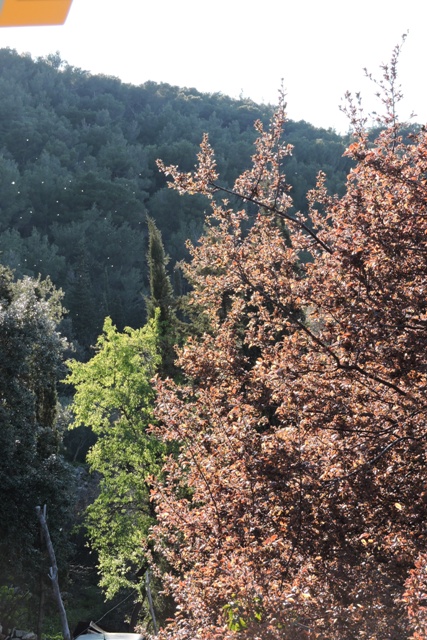
We have had a cold Bura blowing hard for three days at the start of this week.
The word Bura in Croatian is used to describe the bitter wind which comes from the north east.
All the wind directions are given names, rather than calling them by the direction they are coming from.
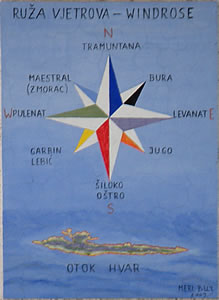
A true Bura is when there is a low pressure system centred in the Ionian sea, which draws cold air down from the central European planes.
The strength of the wind often closes exposed roads and bridges on the main north south highway to Zagreb.
It is cold enough to freeze the sea on the coast of Istria, at the north end of the Adriatic, here at Senj.
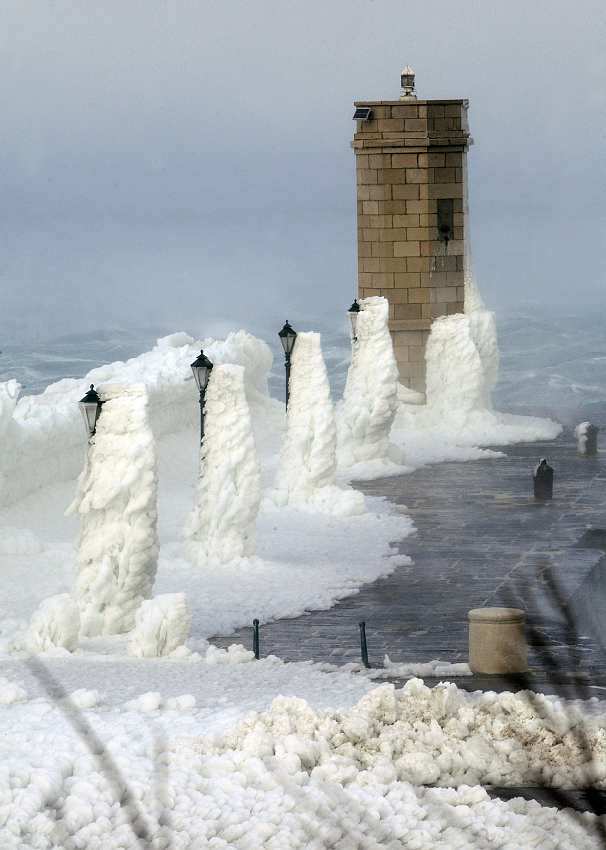
Generally the skies are clear during a Bura, so you have bright sunshine and a high level of wind chill at the same time.
Taking the reading from my weather station, this week the cold wind has meant that we are well below the average temperatures normally experienced at this time of year here in Dol.
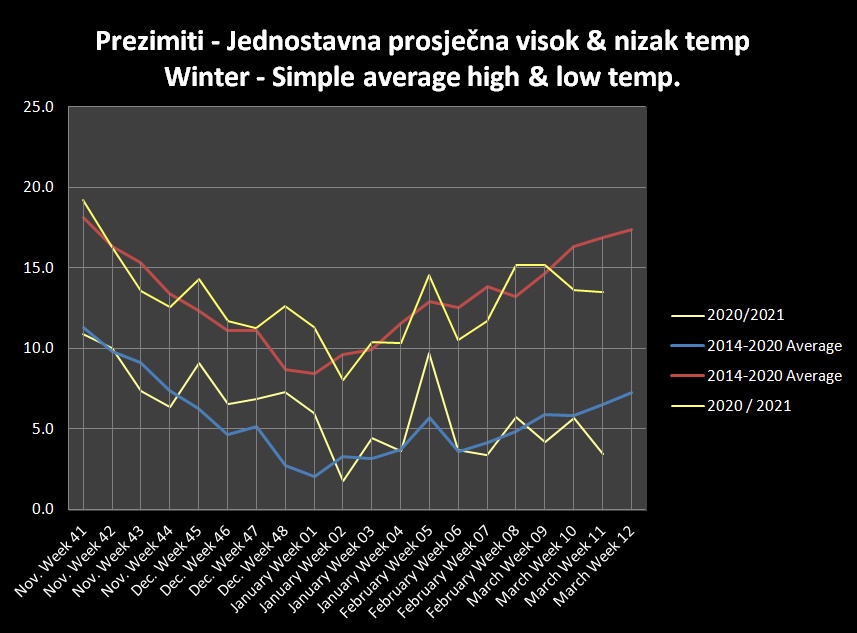
I know it’s been cold because for several mornings in succession, I have woken to find the felines sharing my bed. I have an extra, old, duvet cover on top, just for this reason.
COVID update
Houston, Europe has a problem!
The problem is that there is not enough vaccines. Or depending which newspaper you read, that incompetent government’s have been unable to set up efficient vaccination programmes.
What the truth is, I know not. But what I do know is that here on the island there is a dearth of vaccine supplies.
When I was in town this week, I stopped for a coffee and croissant at Markos, which is my usual coffee spot. I have not had a coffee in town for more than 12 months.

I was socially distanced from the other two customers by some distance. The café has only just opened, having been closed and shuttered since the start of the lockdown. I felt obligated to support the owner, but the coffee didn’t half taste good.
Last week the Doctors Surgery in Stari Grad received one vial of vaccine, enough for just six people. That doesn’t go very far with the population of 3,500 +/-.
The BBC has a page just about COVID vaccine delivery: “How fast is progress around the world?” which is updated daily.
Currently Croatia has the lowest rate of vaccinations of the 27 EU countries, and we are only marginally ahead of Albania, Latvia and Azerbaijan.
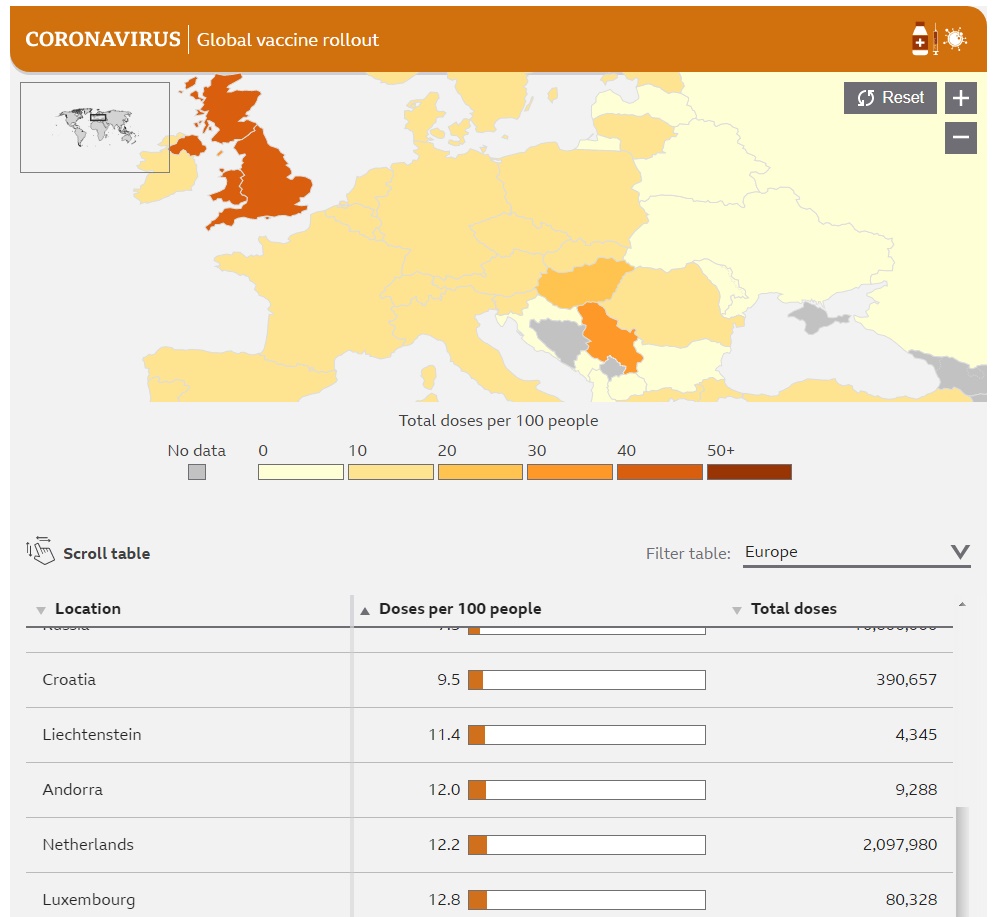
The map on the BBC web page is interactive and you can select different regions or the whole world to see how where you area is doing.
Like most countries, the Croatian Government publishes a daily raft of information about how Koronavirus is spreading.
I have been taking just four of the many figures, which provide a snapshot of what is happening. These four graphs start from 1st January and run to today, 27th March.
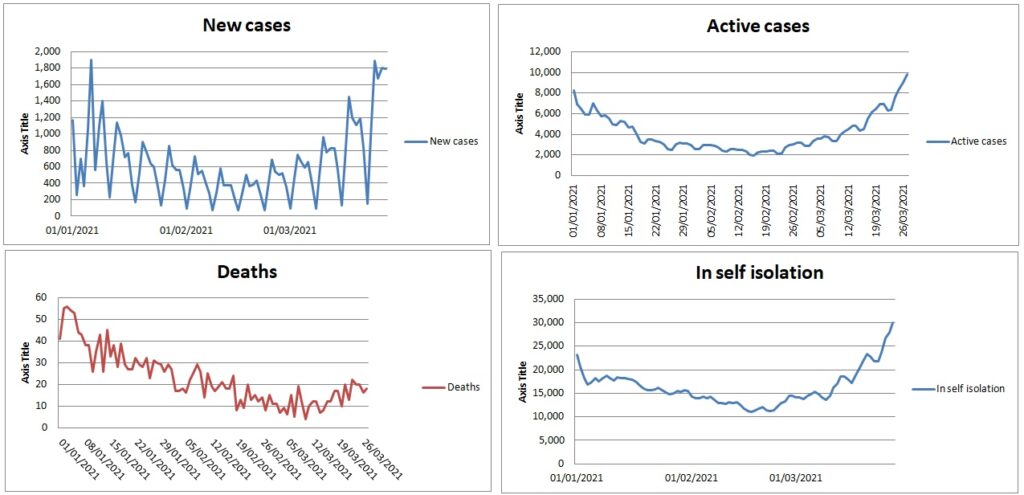
It is easy to spot the trends using graphs rather than just comparing bare figures.
First there is the weekly reporting blip, which makes reported figures at the weekend low, followed by a surge every Tuesday. It is so regular that it looks rather like the heartbeat trace on a monitor.
The death rate is interesting. There is a lag between infections and deaths, but the current wave seems to suggest that the medical services are getting better at preventing severe infections.
Clearly there are problems with obtaining supplies of the vaccine. This coupled with the third wave of infections which all of Europe is experiencing, together with the approach of Easter, a traditional holiday season, does not bode well.
Where Croatia will go with this pandemic remains to be seen. However I suspect that I will continue to practice social isolation for some months to come.
What do you do when the wind blows?
I have already mentioned the cold Bura we have experienced at the beginning of the week.
It has not been cold enough to light the fire, but I will admit to still turning the electric blanket on before bed time. Perhaps that is why the felines like congregating at the foot of my bed?!
During the week I finished the latest of the PMCC (Police Memorabilia Collectors Club) magazines. This was published on Friday. The monthly magazine is always published on the last Friday of the month.
But while the wind was blowing, I was crunching data on a history project I am running. The project is to to identify and map the location of the police boxes, pillars, posts and cabinets, of the forces which used them.

We have an active FaceBook group who are gathering and recording information.
The project’s idea is to produce a series of Monographs, looking at all the individual forces. Each Monograph will record the location of the boxes and pillars, with maps and photographs and details of how they were used.
I have had some really nice stories about how police boxes have helped people. There is the lady from York, whose father found a patrolling policeman during an air raid blackout during WWII.
The policeman took her Dad to the box at Holgate Beck Bridge. From there, he was able to call an ambulance which took her Mum to the Maternity Hospital, where she was born.
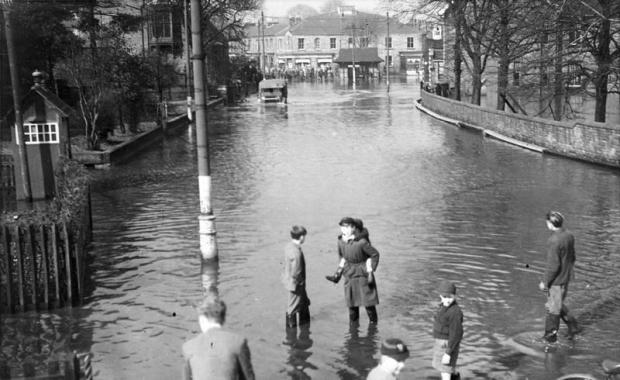
People today have forgotten that 60 and more years ago, there were approaching 200 separate police forces across the UK. Each had its own rules and systems, but many practices were similar.
In almost every force there were beat directories, known as “Beat Books”. These pocket size documents laid down in great detail where and at what time the patrolling policemen had to be.
There were no patrolling policewomen in those days!
I have been asking colleagues who still have a copy of their old Beat Book, hidden away, to copy and send it to me. They are a fascinating part of policing’s social history.
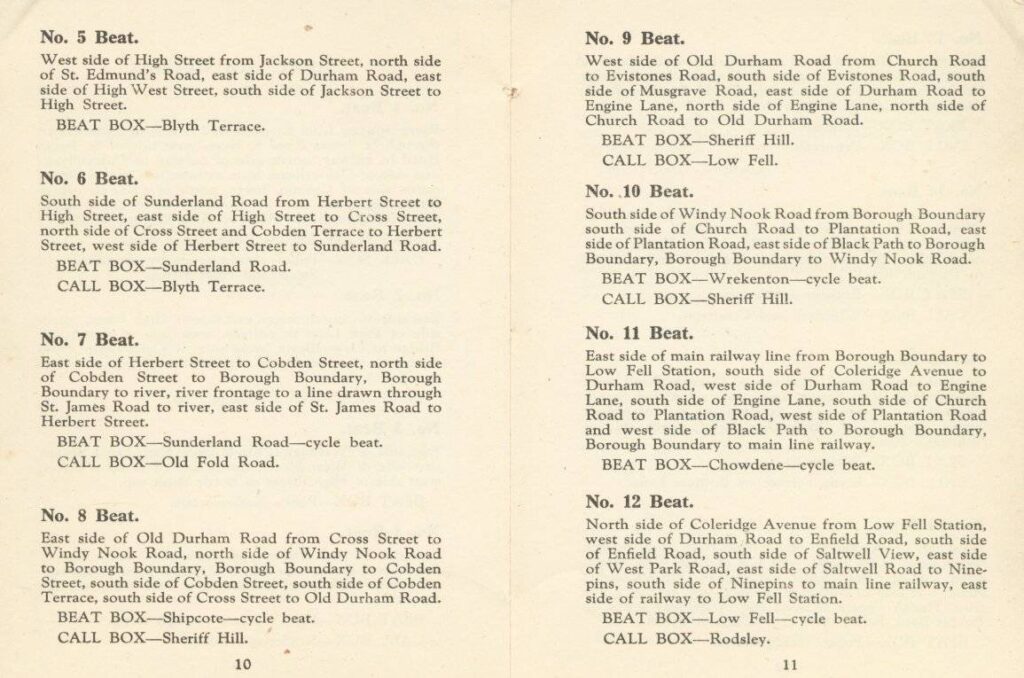
So while the wind was blowing, using a raft of difference sources, I was able to recreate the foot and cycle beats of the Gateshead Borough Police. I found a photograph of a “Dr Who” police box at Wrekenton crossroads, taken around 1950.
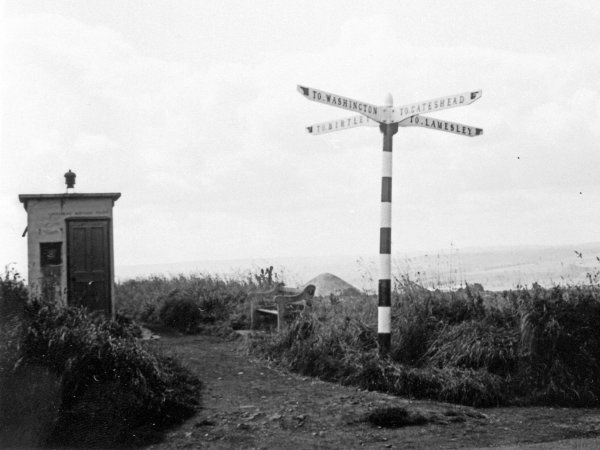
It is hard to imagine that this was once the route of the Great North Road, between London and Edinburgh.
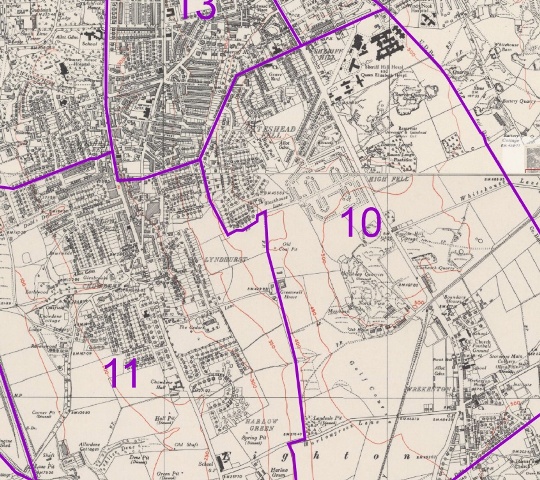
A Google Street View image today shows the box is long gone (perhaps to Gallifrey). The area where it once stood is completely unrecognisable as being the same place.

I pity the poor bobbies who in all weathers, had to cycle up the steep hill out of Gateshead. The climb was from sea level to 550 feet, just to make a point at Wrekenton.

Most forces had a beat which was considered to have been a “Punishment posting”. The 10 beat of Gateshead borough Police would seem to fit that description!
Odds and ends
I have continued pulling up handfuls of Hairy Bittercress every time I go into the orchards. They seem to spring up overnight!
Mainly this week I have been finishing off jobs I started last week. There was the roof of the shed to seal with silicone to begin with. Then I fitted the door.
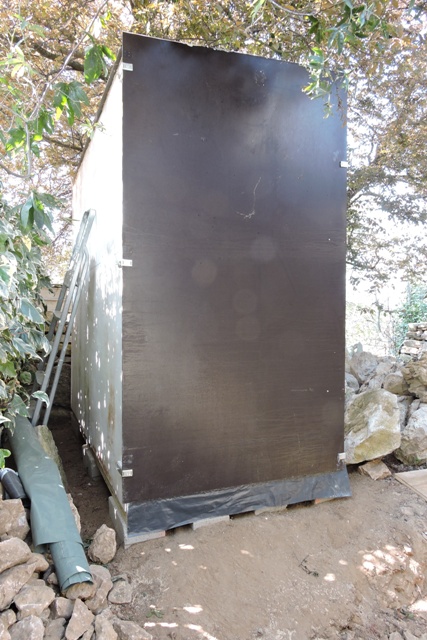
Then when I was in the big Konoba, I found a 2.5 x 1.5 m sheet of 12 mm wood fibreboard.
This had been a partition wall when I bought my Dol house. The fibreboard was one of the first things I removed and put it at the back of the Konoba, where it has been out of the way.
I trimmed one edge to make it true and then laid it as a very substantial floor for the shed. This will support my cement mixer very nicely.
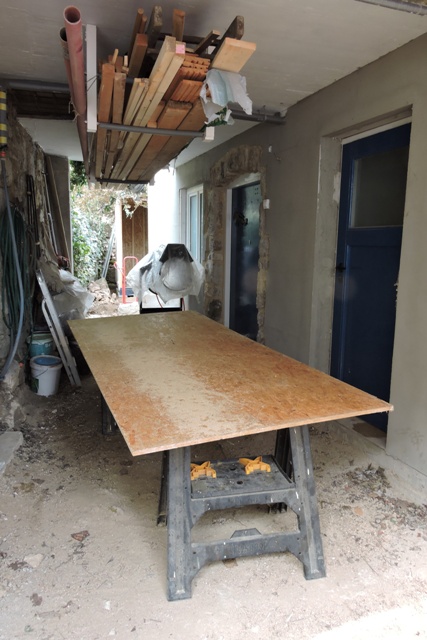
Regular readers will know that I hate throwing anything away. So knowing that, you will not be surprised to hear that I have a lot of timber in the Konoba, a sizable proportion of which are offcurs from projects.
The wood in my store is not small pieces, which get burnt in the wood stove, but rather some sizable, seasoned pieces. I don’t actually have a use for them at the moment, but given time, they will all be used.
I really need to clear this room so I can get on with renovating it, but I also need to clear the wood too.
When I was making a wood storage rack a year ago, I built it with the intention of extending it. This week I began to add the supports for the threaded rod which will hold my stock of timber.
I made and drilled all the wood supports, at the same time last year. But while Cvjetko was rendering the walls of the workshop, I didn’t install them, so nothing got in his way.
With my plan I measured and was about to drill when I saw that the holes in the already installed support brackets had been roughly filled with mud.
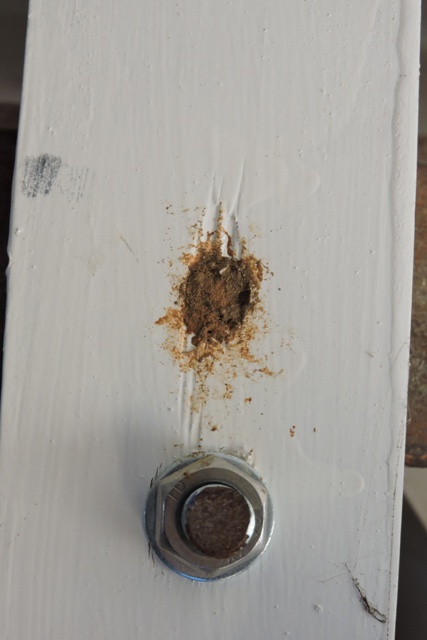
Entombed behind these mud walls there will be the larvae of Thread Wasted Wasps, feeding on captured prey. This is a wasp at work last summer, filling a different hole.
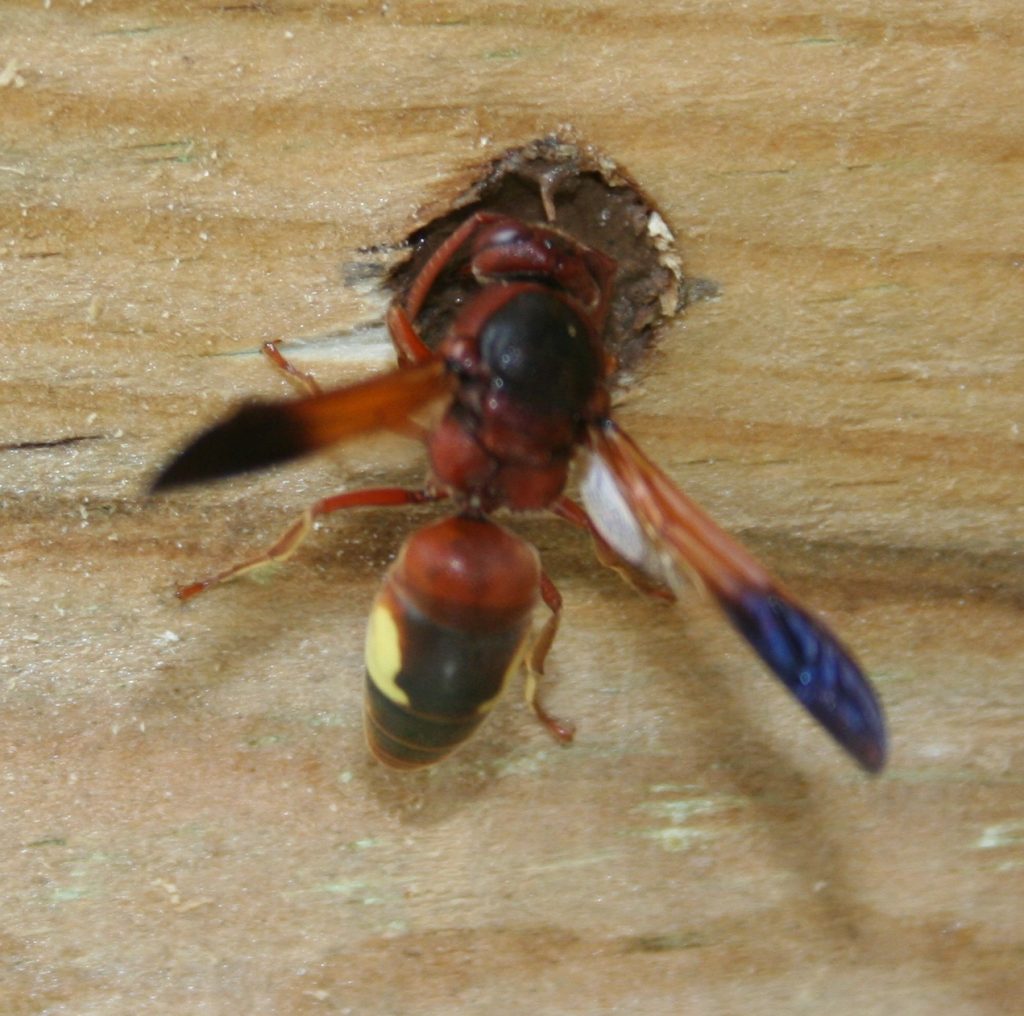
I don’t want to have to remove the timber I have already stored there, so I must install the threaded bar before fixing the brackets. In that way, all I have to do is add nuts and washers and the bar will be fixed.
However with several of these wasps in each of the holes, I will have to wait until the young hatch out before doing much more.
I don’t want to destroy what are beneficial parasitic insects.
Time to change
We experienced the northern Vernal Equinox on Sunday. Not that there is anything much to see, apart that is, from the shortening shadows every day.
I took this photo at mid-day by the sun. In mid-winter the sun is just skimming the tops of the trees on the hill to the south.
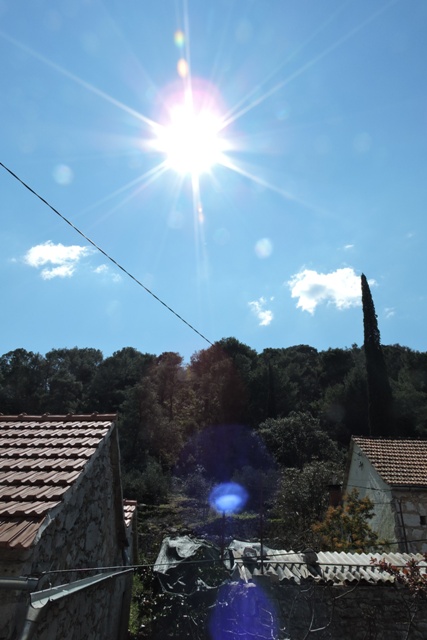
The bi-annual equinox is when there are exactly 12 hours of day and 12 hours of night.
Now we are at the point in the year once again, when the clocks will change.
Throughout Europe at 01:00 tomorrow morning (Sunday 28th) the clocks go forward one hour onto CEST – Central European Summer Time. They will go back again at the end of October.
The European Commission has mandated that the EU should go onto fixed time zones. They can be appropriate for the Longitude of each country, rather than unified across the whole block.
So EU countries would no longer have the bi-annual time changes, because of the disruption the change causes to peoples lives.
However because of the pandemic, the implementation date for the change has been put back. It should have taken place this year.
Personally I don’t like these time changes. We didn’t change the clocks when I worked in Abu Dhabi, or in Arizona, so for me having a constant time, throughout the year can’t happen soon enough! NCG
Looking back – Week 12 blogs from past years
2016/12 A long time ago, in a far away place….
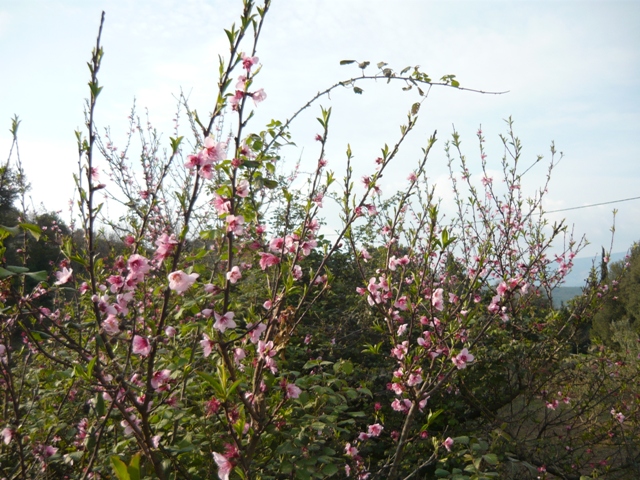
2017/12 The law of holes…. and a 20º degree week
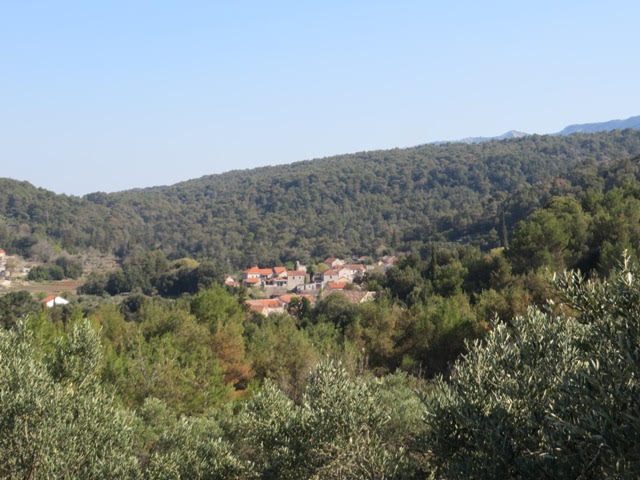
2018/12 Rising sea levels
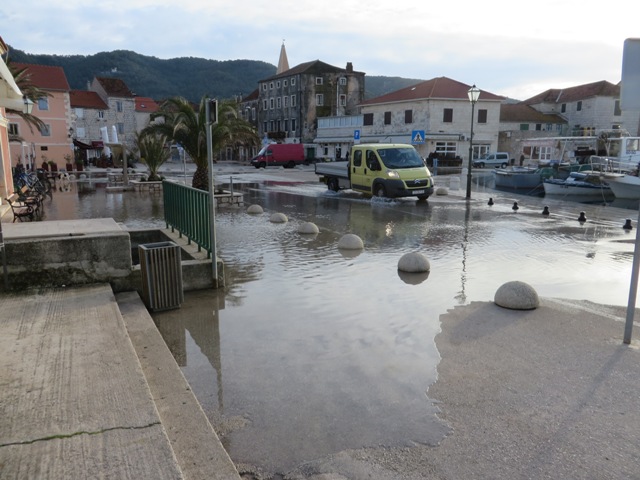
2019/12 OHIO in action
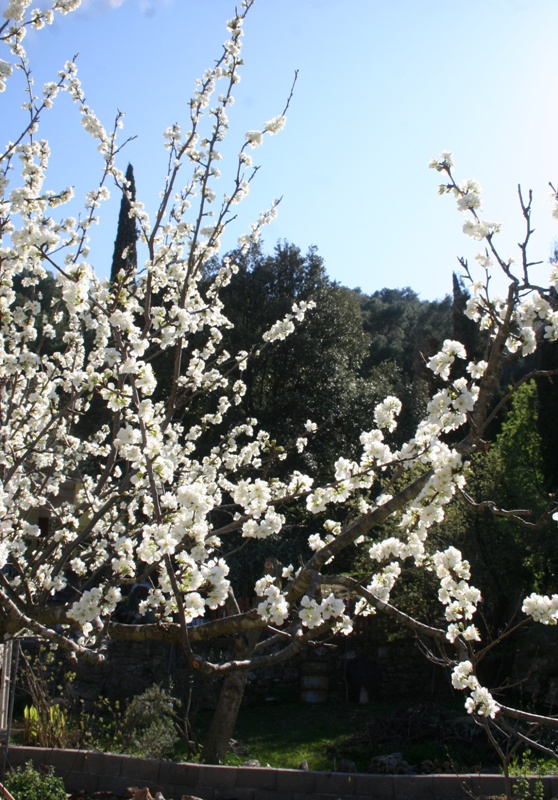
2020/12 Perianths and Tepals
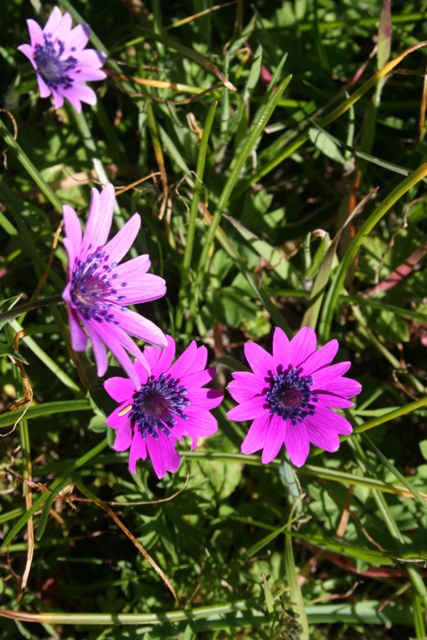
One Response
Elizabeth Blackledge
Hi Norman, your police history project seems to be going well. It will be a wonderful resource.
I love that you are downing tools to allow the wasps to hatch.
As always, take care and stay well.
Elizabeth